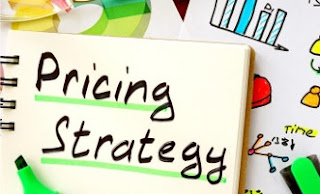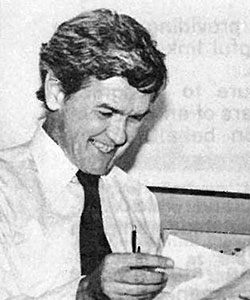A blog with useable information to support, educate & amuse marketing writers of all experience levels
Thursday, July 27, 2023
Wednesday, July 26, 2023
12 Effective Pricing Strategies for Maximizing Sales
"Anchoring Effect"
By initially setting higher prices for your products, you can make subsequent prices appear more reasonable to customers. This technique leverages the tendency for individuals to rely heavily on the first piece of information presented to them when making a decision. For example, offering a hoodie at $50 followed by a T-shirt at $30 can create a perception of value for the T-shirt.
"Framing Effect"
Presenting prices in different ways can influence how customers perceive them. For instance, using terms like "monthly subscription" versus "annual subscription" can alter customers' cost perception. Experimenting with various framing techniques can help you position your prices more favorably to customers.
"Loss Aversion"
Tap into customers' fear of missing out on opportunities or potential losses by using phrases like "limited time offer" or "exclusive deal." People are more likely to act to avoid losses than to achieve gains. By highlighting the exclusivity or time sensitivity of your offer, you can prompt customers to make a purchase decision sooner. For example, announcing the upcoming launch of an exclusive collection of NFTs can create a sense of urgency.
"Odd-Number Pricing"
Odd-number pricing, such as $19.99 or $9.99, can make prices seem more affordable and appealing to customers. People tend to focus on the leftmost digits when processing prices, so setting prices just below a round number can create the perception of a better deal.
"Decoy Effect"
Introduce a slightly inferior but cheaper third option alongside your main product to make the main product appear more attractive. This strategy exploits the contrast effect, where customers tend to compare options relative to one another. For instance, presenting a main product at $150 and an inferior product at $130 can lead customers to perceive the main product as offering greater value.
"Scarcity"
Create a sense of urgency by emphasizing limited supply or time-sensitive deals. This psychological trigger motivates customers to act quickly, as they fear missing out on the opportunity. Use scarcity sparingly and ensure its authenticity. For example, promoting a limited-time offer of only 200 flat screen TVs available can drive immediate action.
"Perceived Value"
Rather than solely focusing on the price, emphasize the value your product or service brings to customers. Highlight the benefits, features, and unique selling points that differentiate your offering. By emphasizing the value customers will gain, you can make the price appear more reasonable. For instance, promote an automation system by emphasizing how it will enable customers to spend more quality time with their families.
"Price Bundling"
Encourage customers to spend more by offering related products or services at a discounted price when purchased together. This strategy leverages the idea of perceived value, making customers feel like they are getting a better deal. For instance, offering an iPad for $800 or an iPad and iPhone bundle for $1100 can incentivize customers to choose the bundled option.
"Payment Options"
Offer flexible payment options, such as financing or installment plans, to make your products more affordable to customers who may not have the funds to pay upfront. By spreading out the cost over time, you can overcome price barriers and expand your customer base. For instance, presenting a monthly price of $10.99 or a yearly price of $99.99 can make your product accessible to a wider range of customers.
"Dynamic Pricing"
Utilize dynamic pricing to adjust prices in real-time based on various factors such as demand, time of day, or customer segments. This strategy allows you to optimize pricing to maximize revenue and respond to market conditions dynamically. By leveraging data analytics and algorithms, you can set prices that reflect the perceived value of your product at any given moment. For instance, offering personalized discounts during low-demand periods or implementing surge pricing during peak hours can help you capture additional revenue while satisfying customer preferences.
"Premium Pricing"
Higher prices can create a perception of luxury, exclusivity, and quality. This strategy attracts customers who desire premium experiences and are willing to pay a premium price for them. Highlight the superior features, craftsmanship, or exclusivity of your product to justify the higher price. For example, if your competition sells a similar product for $8.99, positioning your product at $15.99 can convey a sense of exclusivity and quality.
"The Goldilocks Effect"
Provide customers with a moderate number of options to avoid overwhelming them. Too few choices can limit customers' perceived freedom, while too many choices can lead to decision fatigue and indecision. Find the right balance by offering a few well-curated options that cater to different preferences and price points. For example, presenting three different offers with low, medium, and high prices can help customers make a more confident and informed decision.
By incorporating these 12 powerful pricing strategies into
your business, you can effectively influence customers' perceptions, boost
sales, and drive revenue growth. Remember to experiment, analyze customer
responses, and adapt your pricing strategy accordingly to find what works best
for your specific market and audience.
Tuesday, July 25, 2023
And More
He was tough yet fair and I was hoping to please him with the news story I had written. And rewritten multiple times with the goal of getting his approval. And to avoid his dreaded "Red F".
“You have everything you need, and more, in the first two paragraphs,” he said.
Monday, July 24, 2023
For the Dogs
They invested in packaging that was psychologically appealing to dog owners, paid slotting fees for the best positions at retail, priced it competitively, and ran a huge advertising campaign.
The product flopped.
After scrutinizing the project to find where a mistake could've been made, they discovered something overlooked by the experts ... the one flaw that killed the project:
Wanna be a copywriter?
Looking for a career? Or a change of career? Are you considering copywriting? I'd suggest you read through the following (including th...
-
Considering going freelance? Or maybe you've already taken that step. Here are some educational resources that can help you maximize su...
-
"Your thinking about editing is wrong." That eyeopener is from Erica Schneider who goes on to say: "Editing is not a cutting ...
-
The Hook: Taylor Swift “…about a time she got her heart broken, although not in the way you might expect.” The Story: In less than 20...







